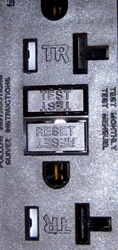Note to on-line users not in my classes: this is a study sheet. It is not complete instruction in first aid or any of the subjects listed.
I have moved much of it to individual webpages but am leaving this original webpage for previous students to reference.
Rule #1 Don’t make things worse
-don’t aggravate injuries-(don’t move anything you think
might be broken)
-don’t move victim (especially if you suspect a spinal injury) unless you absolutely must
-don’t
increase danger to victim
-don’t expose others to risk and create more victims
-don’t force first aid on a conscious, sane, sober adult who doesn’t want it (get consent/explain what you are doing and keep getting consent/explaining as you go along)
are now at: Times to suspect a spinal injury (symptoms, causes, signs of spinal injury)
Reasons why a person might become unconscious or semi-conscious
Altered mental status (and possibly a confused or combative state) can be caused by:
SUDDEN Altered mental status, (and possibly a confused or combative state) AKA delirium, which can indicate a life-threatening condition,
are now at:
Causes of fainting, altered mental status, sudden altered mental status, unconsciousness
Arm = brachial
Neck = carotid
Groin = femoral
Wrist = radial
Students in HLTH57E (CPR) should be familiar with everything above this part.
Students in HLTH57A (first aid) and lifeguard training or an enhanced staff first aid class should be familiar with everything.
is now at: Seizures, causes of and basic care for
are now at:
Concussion signs and symptoms, prevention
and
Signs of wound infection
are now at Injuries Quick Facts
__________________________________________
To care for a victim of stroke, think FAST .
Face – weakness on one side of the face
Arm – weakness or numbness in one arm
Speech – slurred speech or trouble speaking
Time – Time to summon EMS personnel (call 911) if any of the above are seen
and note the time the signs and symptoms began
see:
If you suspect a stroke, question on the HLTH 57A final exam
Normal respiration for an adult is 12 to 20 breaths per minute, children ranges with age, from pre-teens at 12 or 15 to 20 to newborns to about six weeks at 30 to 50
Adult 60 to 100
Child 80 to 150
newborn to about six weeks, 100-160
infant 80 to 120 to possibly 150
an athlete may have a pulse of 50 beats per minute or lower
Normal capillary refill is 2 – 3 seconds (not effective on very cold fingers)
normal rectal temperature is 99.6°F
normal armpit (axillary) temp is 97.6°F
Person, place, time, event
Alert: able to respond appropriately to questions (including person, place, time and event)
Verbal: Responds appropriately to verbal stimuli when you speak or shout
Painful: Only responds to painful stimuli, such as a pinch
Unresponsive: Does not respond; no gag or cough reflex
a response could include grimacing, rolling away from your voice, moaning
Sierra Club wilderness first aid
“rule of fours”
you can live 4 minutes without oxygen,
4 hours without shelter,
4 days without water,
4 weeks without food
(but that may be the limit of any reasonable expectation of survival)
first aid Secondary Assessment
When you plug an appliance into a wall outlet and turn it on, it does not use up all the electricity coming to it. The electricity returns into the wall outlet. A special type of outlet, a ground fault circuit interrupter (GFCI), constantly monitors the returning current. If the current does not return because it goes to ground… (for example through you or other people), because you:
put a boom box on a starting block next to a swimming pool and it falls in, then sending the electricity into the pool water and the aqua aerobics class members
or
work out in the rain with a power tool that has a frayed wire and the wet ‘hot’ wire sends the electricity into you
or
don’t have a long enough ‘suitable for use with outdoor appliances’ extension cord, so you string together a few that are not labeled for outdoor use, and not suitable for the distance/wattage of the mega-bright decorating lights you want to use, and the cord comes in contact with puddles and sends electricity into the water/people
… the GFI can prevent electrical shock by noticing the difference in the current and shutting off the current to the appliance/power tool (in as little as one-thirtieth of a second!).
 Please note that GFIs can be damaged by lightning or other electrical surges and need to be tested regularly. Since they might not always be functional, putting that boom box/radio/hairdryer where it can fall in the swimming pool/spa/hot tub/bathtub/kitchen sink full of water is never a good idea.
Please note that GFIs can be damaged by lightning or other electrical surges and need to be tested regularly. Since they might not always be functional, putting that boom box/radio/hairdryer where it can fall in the swimming pool/spa/hot tub/bathtub/kitchen sink full of water is never a good idea.
———————————–
__________________________________________
See also:
What the AED says as you use it
How to pass a Red Cross written test
Bloodborne Pathogens quick facts
Oxygen administration quick facts
The author of this webpage, (written as a homework reading assignment for my students), does not give any warranty, expressed or implied, nor assume any legal liability or responsibility for the accuracy, completeness, or usefulness of any information, product, or process included in this website or at websites linked to or from it. Users of information from this website assume all liability arising from such use.